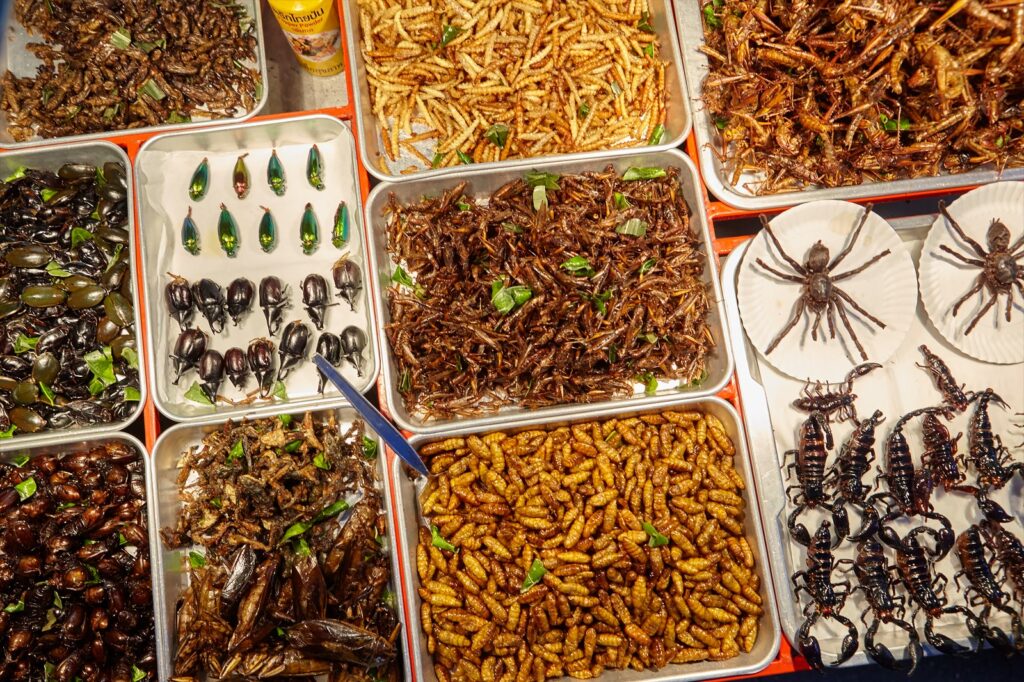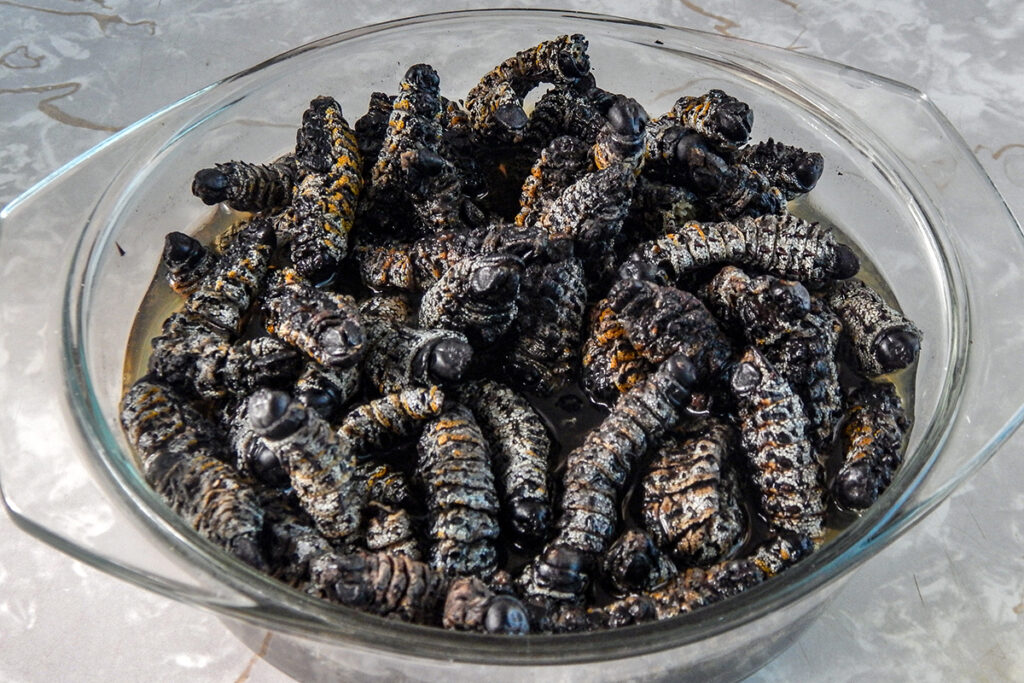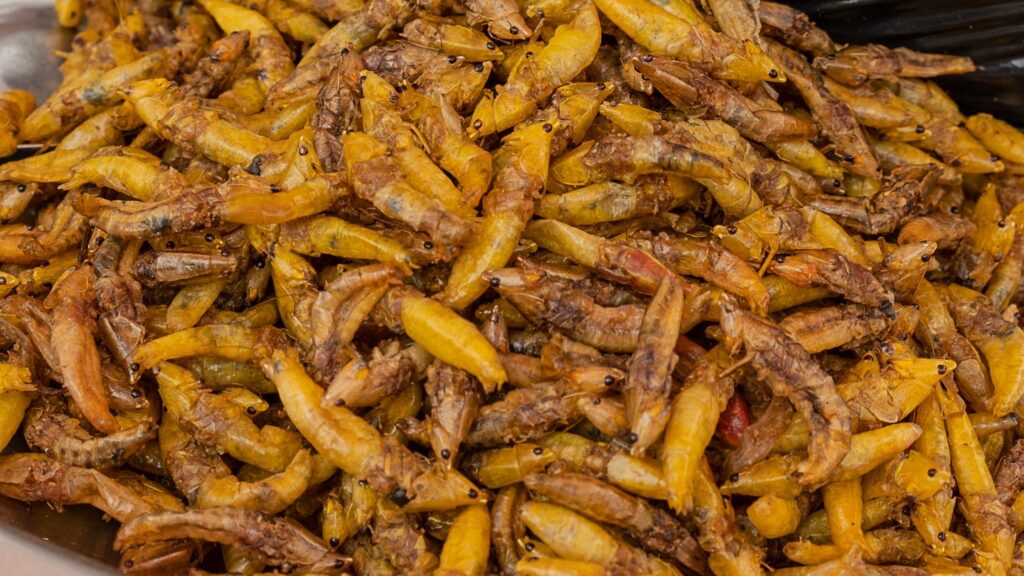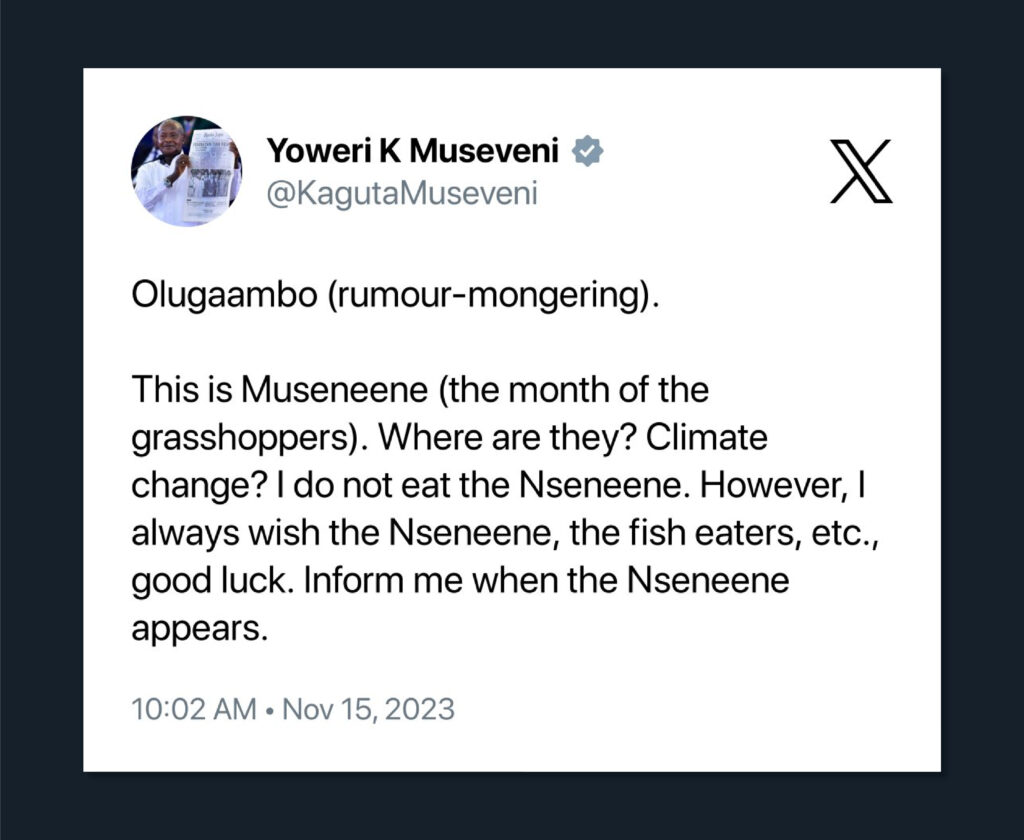For centuries, insects and bugs have formed a special part of the diet of many populaces around the globe. While to some the sight of these crawly, wingy and sometimes hairy bugs triggers a flash flood of digestive juices in their mouths, to others, these intimidating menaces could only feature on their survival foods menu, at best. As such, in the western world, the consumption of insects, which in fancy language is called entomophagy, is quite a rarity; and more of a dare than the constitution of a daily titbit.
With Earth’s inhabitants standing at a staggering eight billion in number and rapidly inching towards nine, it’s estimated that by 2050, we’ll have crossed that mark. This swelling population coupled with the rising levels of global food insecurity has driven stakeholders in the West to embrace alternative options that include lab-engineered foods and, yes, the establishment of insect farms that are intended to provide cheaper sources of nutrition.
Thing is, they may have arrived a bit late to this snack party, cos the people in the East have for long run insect farms to ensure a constant supply of their favorite snacks, all-year round. The difference is that over there, they aren’t driven by food shortage but, rather, culture.

In Asia, you’ll run out of fingers and toes counting the species of bugs that crawl on their menus. The cult leaders, Thailand and China, easily go neck-and-neck in as far as the size of their edible insect inventory. They undoubtedly assemble the most formidable nutritional profile of all non-mainstream sources. From crickets to scorpions, to roaches, tarantulas, spiders, centipedes, weevils, katydids (grasshopper’s cousins)—just name any insect, and it’s not out of their reach! If a quarter of the world population consumes insects daily as a regular diet, the probability that half of those are Asian is almost certainly one. The other half is split between South America (or everybody else) and Africa.
If it weren’t for the seasonal variations, some of the insects and bugs would be staple foods in Africa. In Southern Africa, the mopane worm—literally a caterpillar—is perhaps the most famous bug snack from that end. Moreover, they have to eat that thing before it morphs into a butterfly. Personally, I wouldn’t look at it twice. But, hey, the people in Zambia, Botswana and South Africa have no qualms letting the worm’s gooey guts explode in their mouths. And that’s okay!

In Nigeria, they binge on the palm weevil, also known as owin. It’s extracted from decaying palm, hence the name. Same for Congo and other parts of Africa. In Uganda we don’t eat worms.
Whereas our array of edible insects isn’t as dizzying as the Asians’, our compulsiveness in the aspect of consuming them is akin to a drug addiction. In Uganda, we’ve got grasshoppers, white ants—ignore the irony of them not being white—termites and the occasional locusts. Locusts aren’t that popular, though. I’m not sure if their spiky legs have something to do with it. Possibly! Cos you wouldn’t want to be the one that gets rushed to the ER after a spiky locust hip gets lodged somewhere between your throat and wind pipe. I can’t say I would do the same now, but as a kid, I actually relished the soapy taste of raw locusts! We’ll leave it at that!
The grasshopper—commonly known as nsenene—takes top spot as the favorite for many. That insect is without doubt an object of great importance after national security, and it’s probably just out of poor timing or sheer misfortune that it never made it to Uganda’s court of arms alongside the kob and crested crane. Grasshoppers are seasonal and usually come around in May and November of each year. In those months, particularly November, no economic activity garners more attention than the trade of grasshoppers!

The last time the grasshoppers hit the front-page headlines was back in November 2021 when a lad was filmed vending them aboard a Uganda Airlines flight—the national carrier. That episode raised quite a furore in many social and political circles here. While some thought the entire scene was an international embarrassment, my understanding of embarrassment was a bit different: this fella was selling grasshoppers that looked bland, with neither spice nor flavor, moreover with no branded packaging. I thought he should’ve only been reprimanded for that.
The next time the nsenene headlined the news was a few weeks ago when they refused to show up! That’s a huge problem! Life in Kampala literally came to a standstill! People were mortified! Two weeks into the month, tongues began wagging and speculation became rife that the conspicuously erratic weather patterns presumably played a role in the disappearance of the beloved nsenene—much to the delight of global-warming-cum-climate-change activists who are always on the hunt for anything that remotely validates their activism. The most bold rumor to have recently swirled around was that the Ugandan authorities may have covertly sold the grasshoppers to the Chinese. You see, over here, the Chinese are mostly admitted into the country as investors, but they tend to eventually slide their hand into every income-generating activity: small or big. Who knows if a transaction occurred under the table. After all, the Ugandan government hasn’t come forward to dismiss these allegations!
The disappearance of the insects in peak season drew the attention of the Head of State, who was just as much curious to know what had happened. Unfortunately, President Museveni does not eat nsenene. He’s really clever to have only recently made known his dietary discrimination against the grasshoppers. If we’d known about this during the 2021 General Election, there’s absolutely no way he would’ve won that vote! Therefore, his demonstration of concern regarding the hoppers wasn’t exactly reassuring: his social media post on the subject is pretty much the closest he’ll get to easing the citizens’ anxieties.

On the other hand, a pro-entomophagy President would’ve promptly instituted a commission to investigate this serious matter in the first week of November, in addition to borrowing a couple of leaves from the Thai on how they maintain an incessant supply of insects in and out of season.
At this juncture, I’ll ask that you please rise to your feet and take a bow in honor of the gallant men whose ladies are inconveniently expecting during this season of bug scarcity. You’ve really got to feel empathetic towards those gents. Alas! That pregnant lady will crave the most unavailable snack at the sorriest hour of the night! That grasshopper must be found or someone’s surely spending the cold night on the porch.
A few years ago when my friend Rebecca was expecting their child, she often asked me to help drive her on a few errands around town. You can’t be pregnant and dare drive through the mayhem of Kampala’s chaotic traffic and nasty roads. Trust me, that child would show up before their due date! I can almost confidently say she had more visits to her grasshopper dealer than she did to her doctor at the maternity hospital. Just to give you a bit of perspective on how crazy the situation was: her dealer was a certain lady that sold the insects in Ntinda, a Kampala suburb, almost 10kms away from Rebecca’s place! Evidently, distance wasn’t a deterrent. For God-knows-how-long, she placed orders on a daily basis and had them delivered to her wherever she was. For all I know, she had a standing order! Such was her devotion towards these insects. I’m yet to discover but, in this drought, I really wonder how she handled.
Thankfully, truckloads finally trickled in from out of town early this week and continue to. This makes you wonder if the grasshoppers were merely playing a not-very-nice prank on us! Tell you what: for that distasteful joke, they’re gonna feel the crunching wrath of our jaws! With the initial shortage, though, the pressures of demand and supply kicked in with full force, causing the prices to hop through the roof! A 30-kilogram sack of fresh grasshoppers had soared to over $100 in some markets, which’s more than a few times the previous average price.
Don’t get me started on the pre-roasted ones! Those insects are up there shamelessly competing with the price of fuel, you’d think they’ve got some sort of aspiration of becoming a commodity on the stock exchange. So, now we even have to choose between driving and eating grasshoppers! What do these insects really think they are?!–gods?
Perhaps in the future we could consider setting up breeding farms across the country, like they do in Thailand. That way, we’ll stabilize supply and avoid getting into situations where these crunchy creatures literally hold us hostage as they’ve done this year.
Follow the conversation on X:
surely achinese investor must have bought off these grasshoppers. ..but there guys who also sell then in a season you least expect them to be available like march…I wonder where they get them from…
and the price during such atime is like yo buying a quarter aspoon for 6k…they actually literally count for you 2 grasshoppers for 50shillings…Chei
Haha…Sheila brought us some premium ones yesterday. Really tasty! She says she knows some guy that hordes them and sells when they’re out of season. He even exports, apparently!
Beautifully written!
As always I enjoyed the humor and satire. Not forgetting, I hadn’t noticed the furore about the hopper’s delayed appearance 😄😄
😊Thanks! And I see what you did there about not noticing the furore!! lol
Oh how I like those grasshoppers!!!! My jaws are Ready
Sounds like you have them for breakfast, lunch & dinner!
Amasonja rules in Limpompo, I always thought the men were cowards leaving the women pick the worm from tree backs while all they did was just eat. Do you all just shoot those hoppers out of the sky? That would be fun.
🙆🏾♂️Do you also eat the amasonja (didn’t know that’s mopane’s other name!)?
Over here we catch the hoppers using light!
It’s been a minute, like it okay. Depends on how it’s made.
Okay! You should try the hopper though! Do you guys have any crazy insect snack in Majorca?
I am glad I don’t eat these musenene things
Eeewwwwwweeee
Are you not from the musenene clan? 🤔
The insects here are man eaters, not the other way round. Mmnnnn…., I’ll pass on the grasshopper.
😂man eaters! Okay. You’re excused on the hoppers! But I think I would totally pass on amasonja for the sole reason that I naturally find cringey anything that’s at the caterpillar stage of its lifecycle.
When I was growing up in some lousy boarding school where we were fed the worse kind of posho and beans with weavils, we used to get raw nsenene and press the abdomen nani out as appetiser to make the posho edible 😭😭I vowed never to eat nsenene in any form or shape after that. But my kids love them tho so I buy the already roasted ones. I didn’t even know they were scarse this year.
😂😂No way!! How is it that you’ve never mentioned this? Eh! Was your school that broke?
Finally I got to test test,but the price made me think these were bred from a boarding school and fed six meals per day 😅
What do you mean finally!?🤔 Are you saying all these years you never tasted them?
lol @six meals! Yeh, those things are a damn expensive!